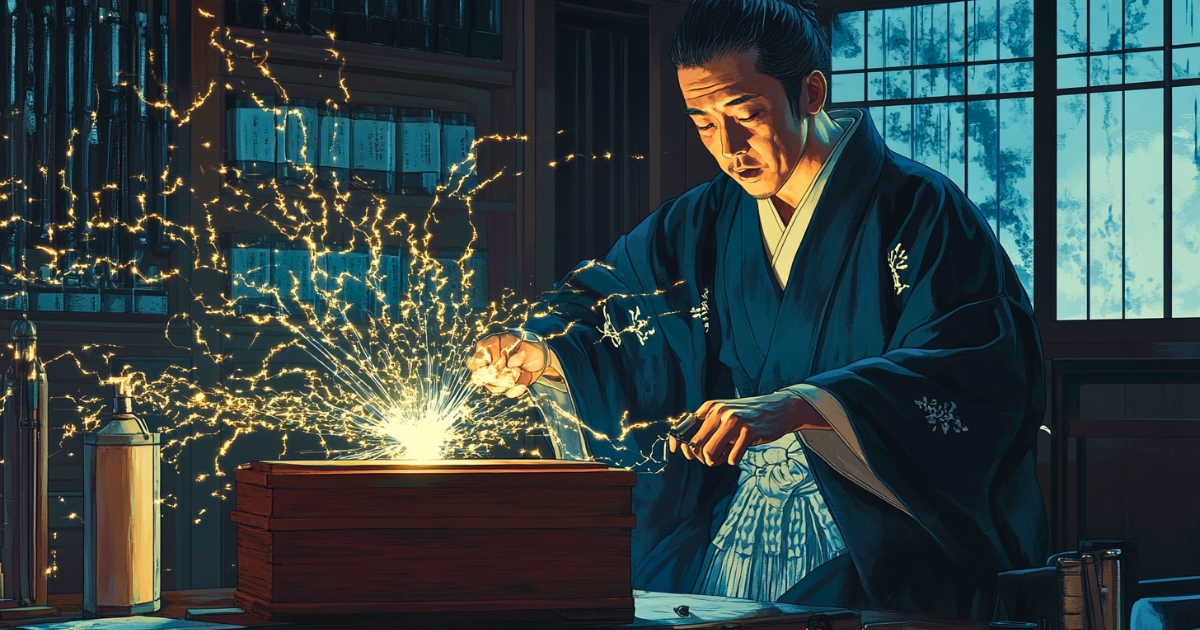During the Edo period, Japan’s interactions with foreign countries were limited due to the isolationist policy. However, trade with the Netherlands was permitted through Dejima in Nagasaki, allowing Western science, technology, and culture to gradually enter Japan. Hiraga Gennai, who lived during this era, eagerly absorbed this Western knowledge and contributed to the development of science and technology in Japan.
This article explores Hiraga Gennai’s work on static electricity experiments, particularly his creation and experimentation with the Elekiter, a static electricity generator. We will also consider the impact of Gennai’s research on Japan at the time and how it laid the groundwork for modernization.
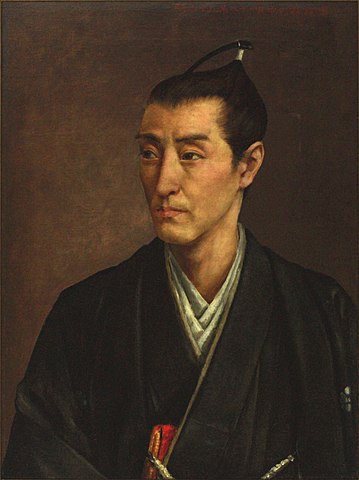
Portrait of Hiraga Gennai, known as a scientist and inventor from the late Edo period. By Nakamaru Seijuro
Hiraga Gennai: The Man
Hiraga Gennai was born in 1728 (Kyōhō 13) in Takamatsu Domain, Sanuki Province (present-day Takamatsu City, Kagawa Prefecture). His given name was Gennai, and he went by the common name Kyūnai, later adopting the pen name Naruto in his later years. From a young age, Gennai was extremely curious, interested in various fields, and devoted himself to learning.
At 18, Gennai moved to Edo where he studied Confucianism and Kokugaku (Japanese studies) while also developing an interest in Honzōgaku (a field encompassing pharmacology and natural history). Furthermore, he showed a strong interest in Rangaku (Dutch studies, or Western learning through Dutch sources), particularly in the fields of physics and chemistry.
Gennai’s interest in the Elekiter was sparked by scientific and medical books from the Netherlands. At the time, research on static electricity was flourishing in Europe, and fragments of this information were reaching Japan. Fascinated by this new scientific phenomenon, Gennai decided to conduct his own experiments and create the device himself.
Structure and Function of the Elekiter
The term “Elekiter” is derived from the Dutch word “elektriciteit” (electricity). Gennai recreated the Elekiter in Japan based on Dutch scientific books and diagrams.
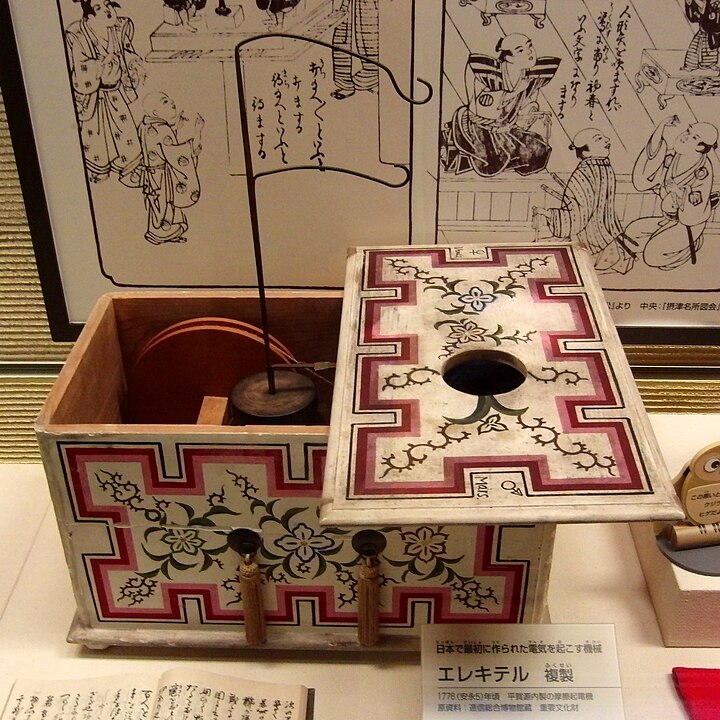
Replica of the Elekiter believed to have been made by Hiraga Gennai. Housed in the National Museum of Nature and Science. By Momotarou2012, CC BY-SA 3.0
The Elekiter, a type of friction-based electric generator imported from the West, is believed to have consisted of the following basic components:
- Glass cylinder: The central part used to generate static electricity
- Friction cloth: Used to rub the glass cylinder
- Rotating handle: Used to rotate the glass cylinder
- Collector: A metal part used to collect the generated static electricity
- Leyden jar: A device for storing static electricity
The operating principle of the Elekiter is thought to have been as follows:
- The handle is turned to rotate the glass cylinder.
- Static electricity is generated by rubbing the glass cylinder with the friction cloth.
- The generated static electricity is collected by the collector.
- The collected static electricity is stored in the Leyden jar.
- Various experiments are conducted using the static electricity drawn from the Leyden jar.
It is believed that Gennai faced many challenges in the process of creating this device. He is said to have particularly struggled with making the glass cylinder, as the technology to create such precise glass products was not sufficiently developed in Japan at the time. However, Gennai persevered through trial and error, eventually succeeding in recreating the Elekiter in Japan.
However, due to limited detailed documentation, it’s unclear to what extent Gennai made his own improvements to the device, and it’s not certain whether any existing Elekiters are Gennai’s originals.
Static Electricity Experiments
The static electricity experiments conducted by Gennai were groundbreaking in Japan at the time. Below are some representative experiments believed to have been conducted. Please note that due to limited surviving records, some of the specific details and results of these experiments are based on speculation.
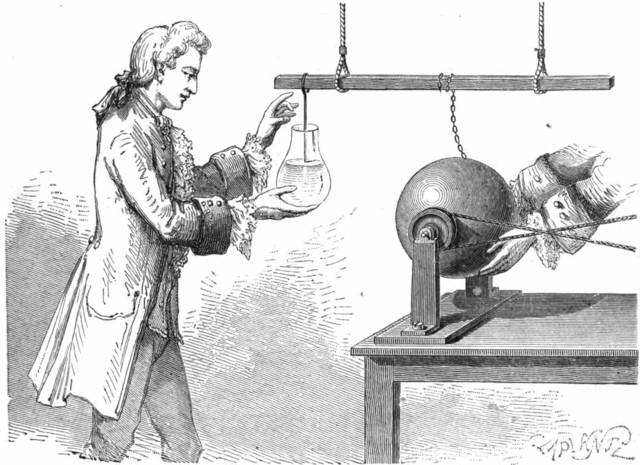
An 18th-century static electricity experiment by Georg Matthias Bose. Bose is operating the static electricity generator while a subject experiences its effects. Hiraga Gennai is believed to have conducted experiments using similar principles in Japan, though his specific methods may have differed. By The drawing seems to be signed ‘Laplante’
Discharge Experiment with Static Electricity
It is believed that Gennai observed sparks produced when static electricity generated by the Elekiter was collected on a metal rod and brought close to another metal object. This experiment is thought to have attracted much attention as a visual demonstration of the properties of static electricity.
Human Body Conduction Experiment
It is reported that an experiment was conducted where several people held hands, and when the person at one end touched the Elekiter, the person at the other end felt a static shock. This was likely an attempt to demonstrate that the human body could conduct electricity.
Static Attraction and Repulsion Experiment
It’s possible that Gennai observed the attraction and repulsion of small pieces of paper or feathers placed near the Elekiter due to static electricity. This experiment may have drawn attention as a demonstration of invisible forces.
Medical Application Experiments
There are records of experiments exploring the potential medical applications of static electricity, such as investigating its effects on the human body for pain relief or paralysis treatment. These are considered to be precursors to later electrotherapy techniques.
Through these experiments, it is believed that Gennai gained significant insights into the properties and effects of static electricity. At the same time, his experiments likely attracted the interest of some intellectuals and scholars, potentially contributing to the spread of scientific thinking in Japan.
The understanding of static electricity in Japan at that time was very limited. For many people, phenomena where invisible forces moved objects or affected the human body must have seemed like magic. However, Gennai’s experiments likely helped to demonstrate that these phenomena could be explained by natural laws, paving the way for a more scientific worldview.
While the Elekiter was initially often treated as a curious novelty, its scientific value gradually came to be recognized. In particular, its potential medical applications drew the interest of some doctors and scholars, possibly contributing to the later development of electrotherapy.
Reception of Western Science and Its Influence
Hiraga Gennai’s research on the Elekiter had a certain influence on the reception of Western science in Japan. However, this influence was likely limited mainly to specific intellectual circles. Previously, Western science and technology were transmitted only through a small number of Dutch studies scholars and interpreters, but Gennai’s activities may have helped spread scientific knowledge and thinking to a broader range of intellectuals.
Notably, Gennai didn’t simply imitate Western technology but attempted to recreate it to suit Japanese conditions. For example, he may have utilized traditional Japanese techniques and materials in the process of making the Elekiter. This could be seen as a pioneering effort in fusing Western science with Japanese traditional technology.
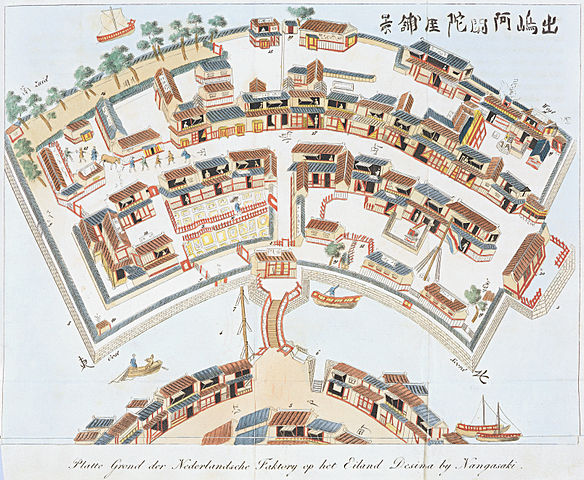
An old map of Dejima in Nagasaki. Western science and technology were transmitted to Japan through this island, influencing scholars of the Edo period including Hiraga Gennai. By Isaac Titsingh
Gennai’s research may have contributed to the development of science and technology in Japan in the following ways:
- Spread of Experimental Spirit: Gennai’s experiments demonstrated the importance of observing and verifying phenomena in practice. This may have been a catalyst for the shift from book-centered learning to empirical science.
- Stimulus for Technological Innovation: The technical challenges faced in the production of the Elekiter may have spurred innovation in fields such as glass manufacturing and precision mechanical engineering.
- Influence on Medicine: Gennai’s attempts at electrotherapy likely influenced some doctors and scholars, potentially contributing to the later reception and development of Western medicine in Japan.
- Foundation for Science Education: Gennai’s writings and demonstrations may have introduced scientific thinking and experimental methods to some intellectuals, forming a basis for later science education.
- Promotion of International Exchange: Gennai’s research may have sparked interest in Western science among some Japanese intellectuals, promoting more active international knowledge exchange.
These influences became more pronounced in the process of modernization after the Meiji Restoration. The scientific thinking and experimental spirit cultivated by Gennai and others are thought to have formed part of the foundation for Japan’s absorption of Western science and technology and its achievement of the industrial revolution.
Conclusion
Hiraga Gennai’s research on the Elekiter was one of the symbolic events in the development of science and technology in late Edo period Japan. His achievements are valued for introducing Western technology to Japan and attempting to recreate it to suit Japanese conditions.
Gennai’s static electricity experiments likely presented a new scientific worldview to some Japanese people of the time and may have spread the methodology of modern science based on experimentation and observation. His research is also thought to have had some influence on various fields including medicine, engineering, and physics, potentially forming one of the foundations for Japan’s later scientific and technological development.
Furthermore, Gennai’s activities demonstrated the possibility for Japan to absorb foreign knowledge and develop it independently, even under the isolationist policy. This may have formed part of the groundwork for Japan’s absorption of Western science and technology and its growth into an industrial nation after the Meiji Restoration.
Hiraga Gennai’s research on static electricity is positioned as one of the important events symbolizing the fusion of tradition and innovation, East and West in the history of Japanese science. His curiosity, spirit of inquiry, and experimental mindset continue to provide us with many insights as one of the origins of Japan as a science and technology-oriented nation today.
